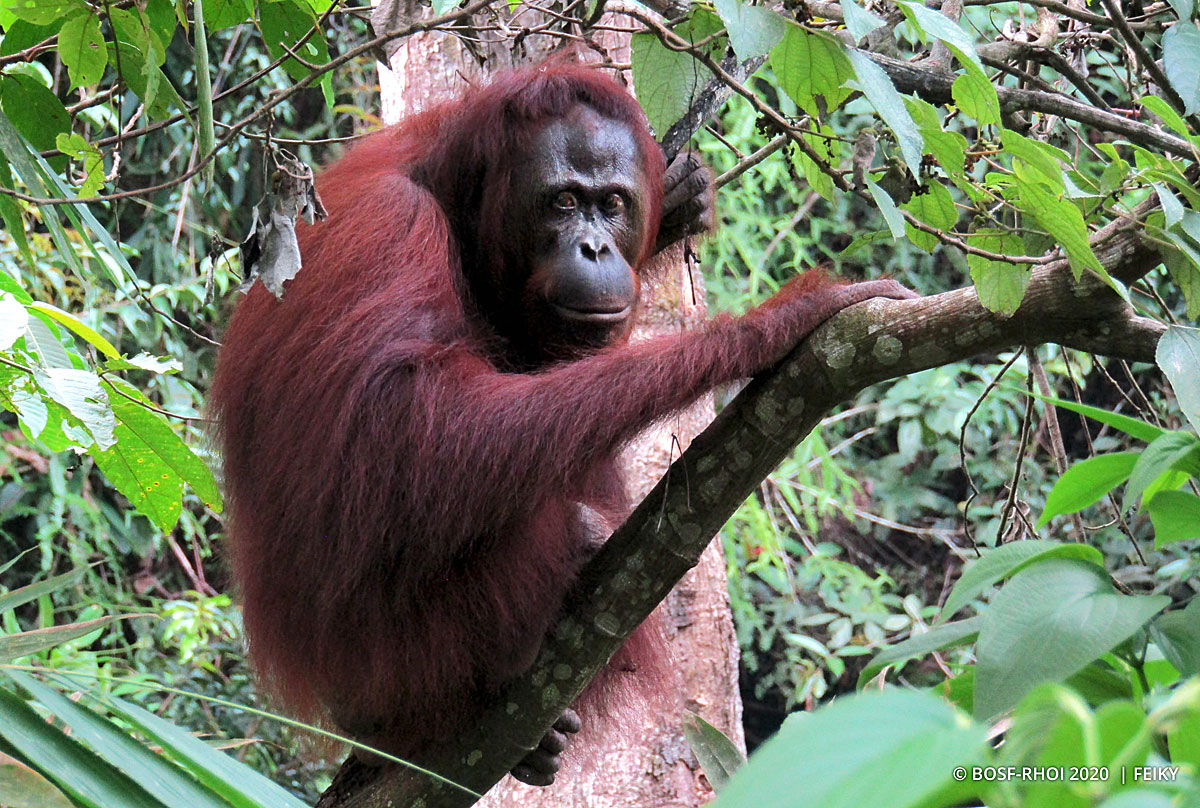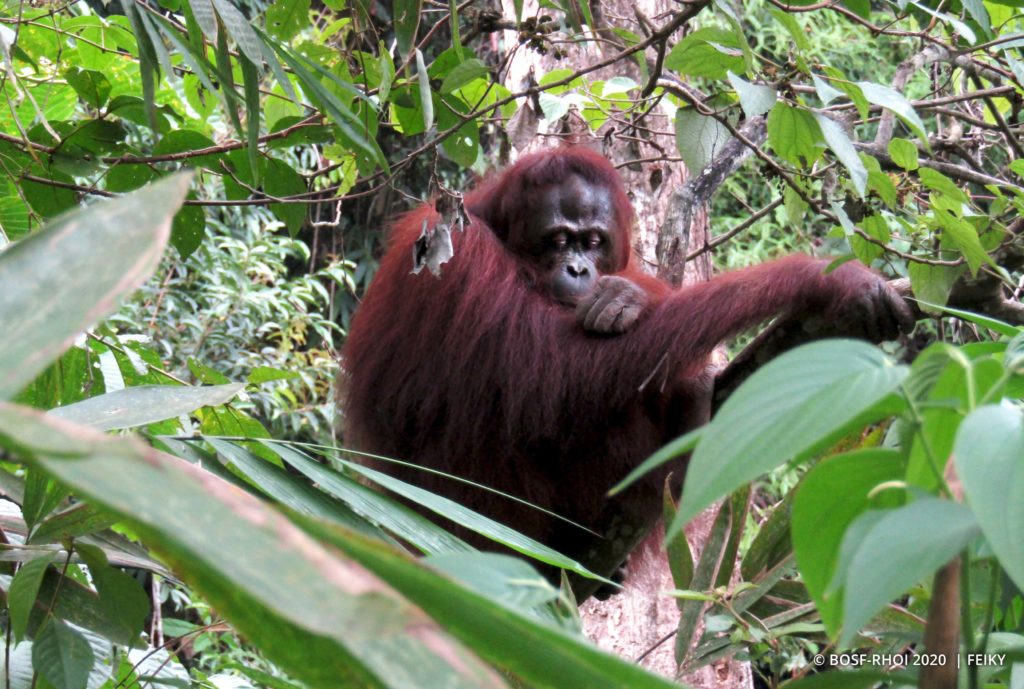The Semi-Solitary Life of an Orangutan

Text by: BOSF Post-Release Monitoring Team in Lesik Camp, East Kalimantan
October 22, 2020 — In nature documentaries that portray the lives of primates in the wild, you will notice that most species live in social groups. If you’ve ever watched recordings of gorillas, chimpanzees, long-tailed macaques, langurs, gibbons, or proboscis monkeys, you would have seen them gathered in groups, exploring their surroundings or foraging for food together.
Orangutans, unlike many other primates, follow a completely different lifestyle. These great apes live in solitude for the majority of their lives, only occasionally congregating with others of their kind as they travel through the forest.
Perhaps you have seen footage of young orangutans playing, eating, and sleeping together that seems to contradict this statement. But this kind of grouping only occurs regularly with orangutans that live together in rehabilitation centers or in captive care. In the wild, this is a much rarer sight as orangutans do not live in social groups.
Orangutans are known as ‘semi-solitary’ animals meaning they spend more time alone in the forest than they do in the company of others. This also means that they must get used to doing things on their own – even when it comes to grooming! Orangutans cleverly use their lips as pinchers to pluck insects and other irritants from their body, and will sometimes nibble at areas of their body that are prone to feel itchy.
Learning to do everything independently is a gradual process for young orangutans, both in rehabilitation centers and under the care of their mothers. In the wild, a young orangutan will learn all of its life skills through observing and mimicking its mother until the age of around 7-8 years, when it is time to separate and live alone.

Bong grooming herself
Even though they are used to a life of solitude, some orangutans, especially females, will occasionally spend time with other females in the forest. This typically occurs when there are plentiful fruits available. After spending some time together, enjoying the fruit bounty, these orangutans will again go their separate ways.
This semi-solitary lifestyle is a requirement for survival in the challenging Bornean rainforests where, dependent on the season, there would not be enough food to support a group of orangutans living together. By traveling alone, orangutans do not have to share food and therefore experience less pressure than a group of primates when the season means less food is available.
Despite the lack of support from a social group, orangutans prove time and time again that they are incredibly self-sufficient. Even when a new challenge presents itself, they are persistent and creative in finding a solution. Take, for instance, tool use. Orangutans are known to incorporate the use of ‘tools’ to help them forage more effectively for difficult to access food sources. They have also been observed using broad leaves or clusters of leaves to cover their heads when it rains, forming a makeshift umbrella! This clearly demonstrates the great intelligence orangutans possess.
Orangutans never cease to amaze us!
Orangutans in Borneo Need Your Help!
Please support the BOSF Emergency Covid-19 Relief Fund
